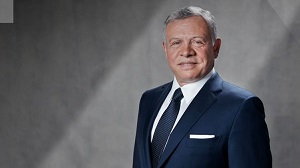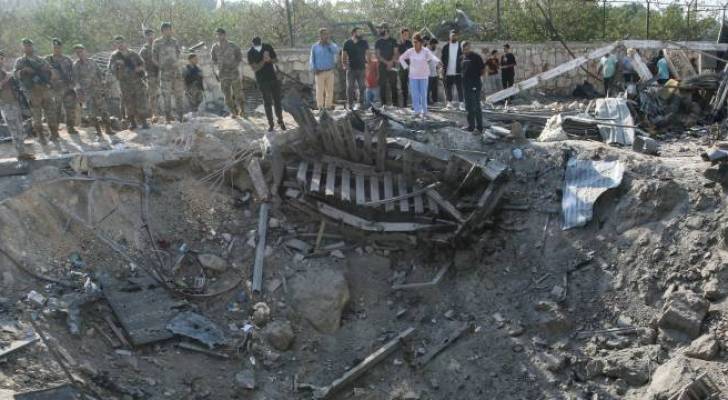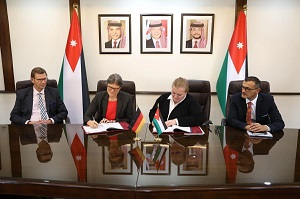Budget 2026: Balancing fiscal stability and economic stimulus - By Raad Mahmoud Al-Tal, The Jordan Times
The 2026 budget projects real economic growth to rise slightly from 2.7 per cent in 2025 to 2.9 per cent in 2026. This optimism is largely based on the launch of major capital projects, including the National Water Carrier and railway and gas initiatives, which are expected to stimulate economic activity and create new jobs. However, maintaining an inflation rate of 2 per cent over the next three years seems overly optimistic given regional and global uncertainties. A more realistic projection would have provided a clearer basis for fiscal planning.
Total public spending is estimated at JD 13.056 billion, with JD 11.456 billion allocated to current expenditures and JD 1.6 billion to capital spending. Current expenditures thus represent 87.7 per cent of total spending, compared to just 12.3 per cent for capital investment. This highlights the operational nature of the budget and the limited space for growth-stimulating developmental spending, underscoring the crucial role of private sector investment and foreign capital.
Local revenues for 2026 are projected at JD 10.196 billion, covering around 89 per cent of current expenditures an improvement over 86 per cent in 2025. Nonetheless, reliance on borrowing and grants remains necessary to fill the gap, emphasizing the importance of restricting current spending to budgeted levels and using borrowing primarily for investment projects. The overall deficit is estimated at JD 2.125 billion (4.6 per cent of GDP), down from JD 2.258 billion (5.2 per cent) in 2025, marking modest improvement while remaining relatively high.
Tax revenues remain the backbone of local revenues, totaling JD 7.656 billion (75 per cent of total revenues), while non-tax revenues account for JD 2.54 billion (25 per cent). Within tax revenues, 68 per cent comes from taxes on goods and services (JD 5.176 billion), while income and profit taxes contribute 25 per cent (JD 1.926 billion). Despite a slight rise in the share of income taxes, the heavy reliance on indirect taxes continues to place pressure on consumers and limits the government’s ability to fund operations and investments independently. Tax reform to boost direct revenues remains a priority.
Debt servicing costs are estimated at JD 2.26 billion, or 17.3 per cent of total public spending, representing a significant fiscal burden that constrains capital investment. Social support programs, including social protection, bread and fodder subsidies, gas cylinder support, and cancer treatment, are allocated JD 655 million. While vital for the social safety net, these commitments further strain public finances.
Capital expenditures are set at JD 1.6 billion, up from JD 1.37 billion in the 2025 revised estimate. Key allocations include JD 396 million for Economic Modernization Vision projects, JD 60 million for the National Water Carrier, JD 35 million for Risha gas exploration, and JD 210 million for municipal support (up from JD 180 million). These allocations reflect a positive shift toward development-focused spending, though the amounts remain insufficient to generate significant economic stimulus.
The budget relies heavily on borrowing, with domestic loans reaching JD 5.543 billion and total financing for covering the deficit, debt, and arrears estimated at JD 9.811 billion. Most of this financing addresses current expenditures and debt repayment, while external funding for investment remains limited. This continued dependence on borrowing limits the state’s ability to allocate resources to productive investment and strengthens the need to enhance fiscal self-reliance.
Analysis of the budget structure highlights the persistent challenge of financial self-sufficiency. The gap between local revenues and current expenditures indicates that full fiscal independence has not yet been achieved. High current spending, heavy debt servicing, and a low share of investment in total expenditure constrain the government’s ability to support a transition toward a productive and sustainable economy.
Within this context, the 2026 budget represents a careful exercise in fiscal discipline rather than a tool for economic transformation. It aims to contain the deficit within narrow margins while maintaining social support and promoting capital investment a delicate balance. Achieving a sustainable balance between local revenues and current expenditures remains essential for financial self-reliance and should be a key medium-term objective for the state.
Raed Mahmoud Al-Tal – Department of Economics / University of Jordan
Latest News
-
 King to start visit to Japan on Saturday, first stop on Asian working tour
King to start visit to Japan on Saturday, first stop on Asian working tour
-
 ‘Israeli’ army announces new wave of attacks on Lebanon
‘Israeli’ army announces new wave of attacks on Lebanon
-
 NATO chief plays down US troop withdrawal from Romania
NATO chief plays down US troop withdrawal from Romania
-
 King listens to Parliament’s response to Speech from the Throne
King listens to Parliament’s response to Speech from the Throne
-
 Jordan, Germany sign €75M agreement to support economic modernization
Jordan, Germany sign €75M agreement to support economic modernization